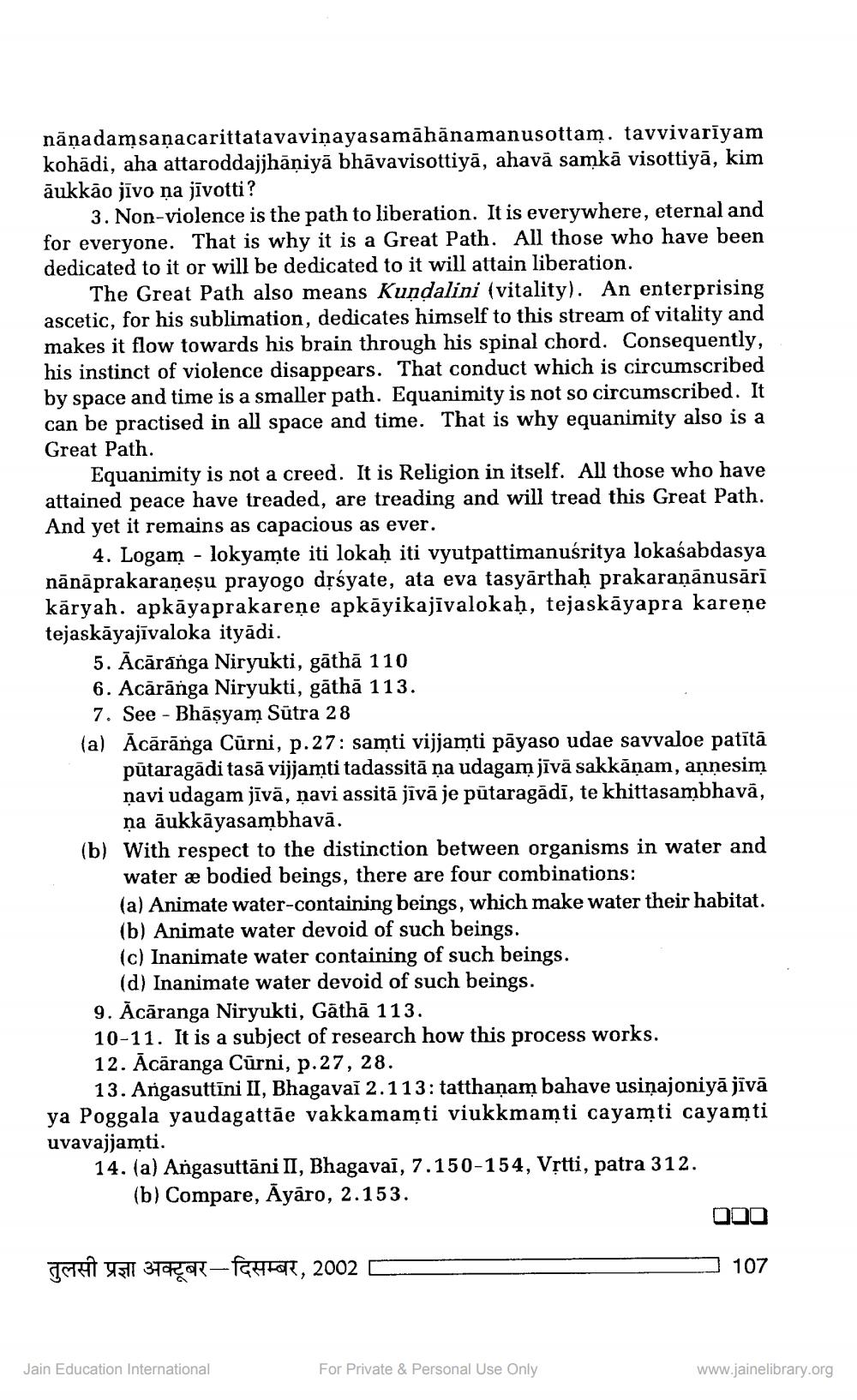________________
nāņadamsanacarittatavaviņayasamāhānamanusottam. tavvivarīyam kohādi, aha attaroddajjhāniyā bhāvavisottiyā, ahavā samkā visottiyā, kim āukkāo jīvo na jīvotti?
3. Non-violence is the path to liberation. It is everywhere, eternal and for everyone. That is why it is a Great Path. All those who have been dedicated to it or will be dedicated to it will attain liberation.
The Great Path also means Kundalini (vitality). An enterprising ascetic, for his sublimation, dedicates himself to this stream of vitality and makes it flow towards his brain through his spinal chord. Consequently, his instinct of violence disappears. That conduct which is circumscribed by space and time is a smaller path. Equanimity is not so circumscribed. It can be practised in all space and time. That is why equanimity also is a Great Path.
Equanimity is not a creed. It is Religion in itself. All those who have attained peace have treaded, are treading and will tread this Great Path. And yet it remains as capacious as ever.
4. Logam - lokyamte iti lokah iti vyutpattimanuáritya lokaśabdasya nānāprakaraneșu prayogo drśyate, ata eva tasyārthaḥ prakaraṇānusārī kāryah. apkāyaprakarene apkāyikajīvalokaḥ, tejaskāyapra karene tejaskāyajīvaloka ityādi.
5. Ācāranga Niryukti, gāthā 110 6. Acārānga Niryukti, gāthā 113.
7. See - Bhāsyam Sutra 28 (a) Ācārānga Cūrni, p.27: samti vijjamti pāyaso udae savvaloe patītā
pūtaragādi tasā vijjamti tadassitā ņa udagam jīvā sakkāņam, annesim navi udagam jīvā, navi assitā jīvā je pūtaragadi, te khittasambhavā,
ņa āukkāyasambhavā. (b) With respect to the distinction between organisms in water and
water æ bodied beings, there are four combinations: (a) Animate water-containing beings, which make water their habitat. (b) Animate water devoid of such beings. (c) Inanimate water containing of such beings.
(d) Inanimate water devoid of such beings. 9. Ācāranga Niryukti, Gāthā 113. 10-11. It is a subject of research how this process works. 12. Ācāranga Cūrni, p.27, 28.
13. Angasuttīni II, Bhagavai 2.113: tatthaņam bahave usiņajoniyā jīvā ya Poggala yaudagattāe vakkamamti viukkmamti cayamti cayamti uvavajjamti. 14. (a) Angasuttāni II, Bhagavai, 7.150-154, Vrtti, patra 312. (b) Compare, Āyāro, 2.153.
ODD
Jaut all star R-faye, 2002 C
] 107
Jain Education International
For Private & Personal Use Only
www.jainelibrary.org




